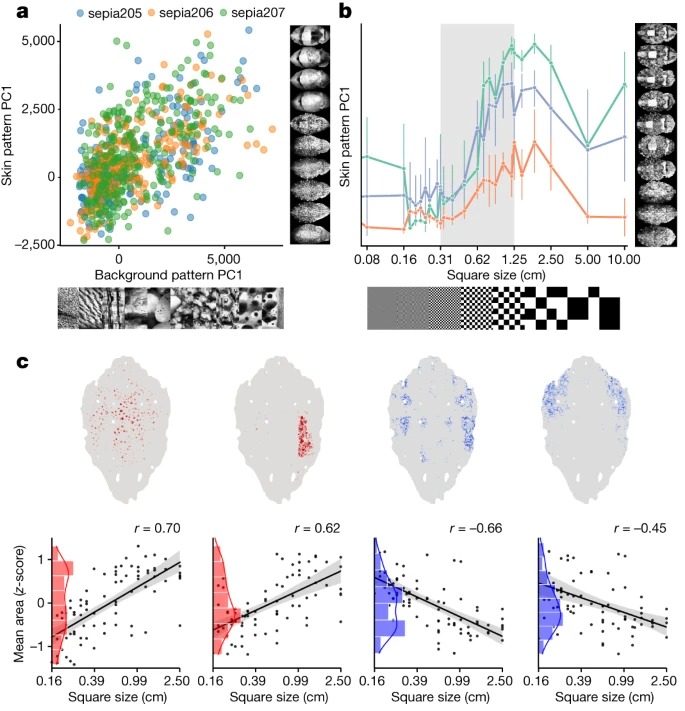오징어 camouflaging pattern matching의 dynamics.

Abstract
많은 cephalopods는 camouflage를 사용하여 탐지를 피합니다. 이러한 행동은 주변 환경에 대한 시각적 평가, visual-texture statistics의 해석, 그리고 뇌에 위치한 motoneurons에 의해 제어되는 수백만 개의 skin chromatophores을 사용하여 이러한 통계와 일치시키는 것에 의존합니다. 갑오징어 이미지를 분석한 결과, camouflage patterns은 low dimensional하며 작은 구성 요소 레퍼토리로 구성된 세 가지 패턴 클래스로 분류할 수 있다고 제안했습니다. 행동 실험에서도 camouflage 에는 vision이 필요하지만 그 실행에는 피드백이 필요하지 않다는 사실이 밝혀졌는데, 이는 skin-pattern space 내에서의 움직임이 정형화되어 있고 possibility of correction이 부족하다는 것을 시사합니다. 본 연구에서는 정량적 방법을 사용하여 갑오징어 Sepia officinalis의 camouflage를 skin-pattern space에서 배경을 일치시키기 위한 behavioural motion으로 연구했습니다. natural and artificial backgrounds에 대한 수십만 개의 이미지를 분석한 결과, skin patterns의 공간은 고차원적이며 pattern matching이 정형화되어 있지 않으며, 각 search는 skin-pattern space를 구불구불하게 통과하며 decelerating and accelerating을 반복하다가 안정화된다는 사실이 밝혀졌습니다. Chromatophores은 camouflaging하는 동안의 변동에 따라 pattern components로 그룹화할 수 있습니다. 이러한 구성 요소는 모양과 크기가 다양하고 서로 겹쳐져 있습니다. 그러나 identical skin-pattern pairs 사이의 transitions에도 그 정체성은 다양했으며, 이는 구현의 유연성과 고정관념이 없음을 나타냅니다. spatial frequency에 대한 민감도에 따라 구성 요소를 구분할 수도 있습니다. 마지막으로, camouflage를 위협적인 자극에 대한 skin-lightening reaction인 blanching과 비교했습니다. Blanching 중 Pattern motion은 low-dimensional pattern space에서의 open-loop motion과 일관되게 직접적이고 빨랐으나, camouflage 중 관찰된 Pattern motion과는 대조적이었습니다.